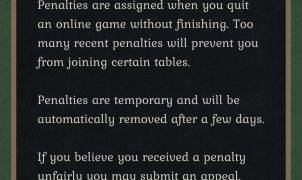In many American prisons, Pinochle holds a unique place as a popular pastime among inmates. Its appeal can be traced back to a combination of factors, including the availability of Pinochle decks, its strategic depth, and the game’s social benefits in an environment where both mental engagement and camaraderie are highly valued. Let’s explore what makes Pinochle a favored game behind bars.
According to Reuters in 2010, reputed mobster Carmine Persico, aka “The Snake”, was often seen hanging out in prison with the Wall Street scam artist Bernard Madoff. The duo allegedly loved to play Pinochle with the other convicted mobsters and one up each other with stories of how they once ran the city from their very different worlds.
In August of 1997, Daniel Landry stabbed inmate Daniel Addis to death while he was playing pinochle in the yard at the California Institution for Men in Chino. Eye witness reports from guards and other inmates say Landry just came right up behind him and sliced his jugular wide open. Blood spewed all over the Pinochle cards falling from his hands onto the prison yard table.
Usually double deck (prison rules), often Cutthroat, Pinochle is often associated with prison. So what’s the connection?
1. Accessibility and Availability
Pinochle’s popularity in prisons is partly due to the availability of the game in commissaries and recreational programs. Most prisons stock limited recreational resources, so inmates and visitors often play board and card games during visits. Many federal prisons and state facilities stock Pinochle decks in their commissaries, alongside other games like chess, checkers, and dominoes. In California, for example, correctional staff bring a game cart once a month to housing units, allowing inmates to check out games for use in the dayroom areas.
This easy access helps Pinochle stand out as a recreational option. While inmates may enjoy other games like Spades, the strategic nature of Pinochle, especially when played with a double-deck setup, attracts a dedicated following. Double-deck Pinochle, commonly known as “Prison Pinochle,” is a slight variation on traditional Pinochle that uses two decks with the nines removed, creating a game that’s both accessible and challenging.
2. Mental Stimulation and Complex Strategy
Prison life is often monotonous, and inmates seek activities that provide mental stimulation and pass the time. Pinochle, with its layered rules and challenging strategies, provides an engaging mental exercise. In this way, Pinochle is similar to chess, which is also popular among inmates. Double-deck Pinochle involves intense bidding, trick-taking, and point-scoring mechanics, requiring players to think several moves ahead and strategize with partners.
Learning the rules can be intimidating, which discourages some new players. However, seasoned players often find that once they master Pinochle, other card games pale in comparison. Inmates report that the game is “like Spades on steroids,” as it involves more layers of play and strategy. This complexity is a reason why many inmates become “obsessively engaged” with Pinochle games, sometimes playing for hours.
3. Social Bonding and Hierarchies
Prison culture places a high value on social status, and games like Pinochle allow inmates to connect and build social hierarchies. Playing Pinochle can serve as a bonding activity, bringing players together and helping them form alliances. In some cases, high-profile inmates—like mobster Carmine Persico, who was reportedly an avid Pinochle player—use the game to socialize and tell stories. In a prison setting, sharing stories and building alliances through games can provide inmates with a sense of belonging and camaraderie, as well as a temporary escape from the hardships of incarceration.
The game also establishes a form of respect among inmates. New players who manage to grasp the complex strategies of Pinochle gain admiration from seasoned players. Inmates who excel at Pinochle can gain status and influence, further enhancing the game’s appeal.
4. Long Game Sessions Fill Time
Time is one of the few resources inmates have in abundance, and Pinochle is a game that can stretch on for hours. Prisoners often have limited activities to occupy their day, so a game that fills several hours provides a welcome diversion. The lengthy nature of Pinochle games allows inmates to immerse themselves in the strategy and focus intently on something other than the environment around them.
For some, these long games become a part of daily or weekly routines. Pinochle provides structure and a small sense of normalcy in an otherwise regimented and restricted environment. Former inmates have even expressed that one of the things they miss most about prison life is the intense, extended games of Pinochle that would help them endure long stretches of idle time.
5. Ties to Historical and Cultural Traditions
While it may not be the single most popular game across all prisons, Pinochle holds historical and cultural significance, especially among older generations and certain ethnic communities. The game has deep roots in American prison culture, particularly among Italian-American and other European communities who played Pinochle long before incarceration. This cultural resonance may be part of why Pinochle has remained a steady choice in prison, as older inmates teach new players, helping the game persist and evolve as part of prison culture.
Conclusion
The appeal of Pinochle in prison is multifaceted. With easy access to the game, a structure that provides mental and social engagement, and the ability to fill hours of time, Pinochle offers prisoners more than just entertainment—it provides a sense of community, respect, and challenge in an environment that often lacks all three. As long as prisons continue to stock the decks, it’s likely that Pinochle will remain a go-to game for inmates seeking a brief escape from their surroundings.


















































































































Leave a Reply